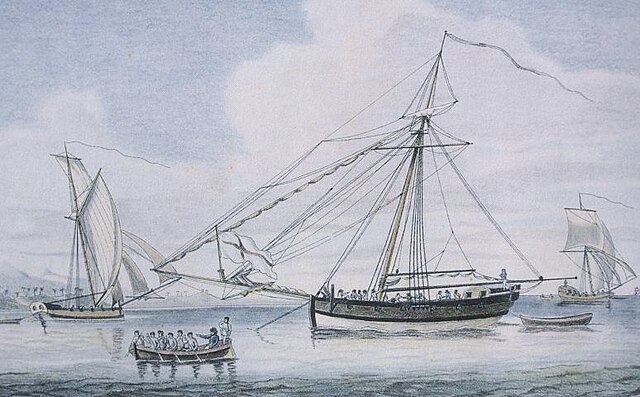The history of the Caribbean reveals the significant role the region played in the colonial struggles of the European powers since the 15th century. In the modern era, it remains strategically and economically important. In 1492, Christopher Columbus landed in the Caribbean and claimed the region for Spain. The following year, the first Spanish settlements were established in the Caribbean. Although the Spanish conquests of the Aztec empire and the Inca empire in the early sixteenth century made Mexico and Peru more desirable places for Spanish exploration and settlement, the Caribbean remained strategically important.
An Arawak stone carving uncovered in Guadeloupe.
The Natives of Cumaná attack the mission after Gonzalo de Ocampo's slaving raid. Colored copperplate by Theodor de Bry, published in the "Relación brevissima de la destruccion de las Indias".
The Piazza (or main square) in central Havana, Cuba, in 1762, during the Seven Years' War.
A 19th-century lithograph by Theodore Bray showing a sugarcane plantation. On right is "white officer", the European overseer, surveilling plantation workers. To the left is a flat-bottomed vessel for cane transportation.
During the Spanish colonization of the Americas, the Spanish Main was the collective term for the parts of the Spanish Empire that were on the mainland of the Americas and had coastlines on the Caribbean Sea or Gulf of Mexico. The term was used to distinguish those regions from the numerous islands Spain controlled in the Caribbean, which were known as the Spanish West Indies.
A Bermuda sloop on the Spanish Main, circa 1807





